Benedetta (2021) Movie Ending Explained & Themes Analysed: Benedetta, directed by Paul Verhoeven, is an outrageous film if you are singlemindedly religious in the Catholic Christian strain of thought. It premiered at the 74th Annual Cannes Film Festival, competing in the category of the Palme d’Or.
It not only seeks to give us a peek into the corruption in the ranks of the counter-reformists in early 17th century Italy but draws out one archetypal example of a nun who sought to challenge the system with her scandalous lesbian affair with another nun in the same convent.
Verhoeven, already quite famous for his exploration and fascination with the human body in his films such as Basic Instinct, comes forward to hold up the naked human body – with its imperfections, beauty, and desires – as a potent symbol of humanity itself. However, this overt emphasis on the body tends to weigh down the narrative, further decreasing our patience to half by appearing directionless and too lost in vague religiosity in the second half.
To be honest, it is quite over-the-top, nothing we haven’t seen in a Verhoeven movie before. It sloppily walks the tightropes between individual, sexual freedom, and religious constraints but never ends up satisfactorily critiquing the Catholic church, perhaps because it was simultaneously invested in crafting the supernatural spectacle of a nun receiving the stigmata.
What unsettles me, however, is that most of the bodies in this film, primarily women, are subjected to the directorial male gaze. The film also doesn’t confirm whether Benedetta’s spiritual visions are real or imaginary, making it a looming gap in the narrative. While Virginie Efira (as Benedetta) shines in this film as the scope of her character transforms in the narrative, Charlotte Rampling, as Sister Felicita, the ex-abbot of the monastery, was my personal favorite character. It is a film that can grab your attention by the horn if you are in the mood for an erotic exploration of religious sentiments.
Benedetta successfully raises important questions about the politics of power, sexuality, corruption, and love at the backdrop of the slowly burning ambers of the Great Plague of Milan. Don’t worry; we are here to explain it all to you. Before you delve into the summary and explanation of the film below, consider yourself warned of spoilers. If you haven’t watched Benedetta yet, you can stream it online and on MUBI.
Benedetta Movie Synopsis and Plot Summary:
The film begins with young Benedetta’s journey to the town of Pescia. During this journey, Benedetta stops at an altar on the roadside to offer her prayers to the Virgin Mary. A group of bandits arrives there and attempts to steal from the party. However, young Benedetta’s warning about punishment miraculously turns to reality when a bird defecates upon the bandit who had snatched her mother’s necklace. The bandits let them pass peacefully and return the necklace too.
In Pescia, Benedetta’s father enrolls his daughter in the convent as a new bride for Jesus, run by Abbess Felicita, in exchange for 100 gold coins and a lifetime supply of wine and fresh oranges. That night before going to bed, as Benedetta kneels to pray for protection in front of the statue of the Virgin Mother, the statue tumbles down upon her. She suckles on the exposed breast of the statue – an act of accepting the Virgin Mary as a spiritual mother and hinting at the scandal that her sexuality would land her up as a grown woman.
In the meantime, Benedetta’s visions become more graphic with violence and start recurring, taking everyone in the convent by surprise. She starts having hysterical fits, kept under control by a prescribed dosage of opium water. Abbess Felicita also assigns Benedetta to share her living space in the dorm with Bartolomea, believing that some company will do her good. She starts to recover, until one night, she has another vision of Jesus Christ asking her to undress and touch his hands. She wakes up with stigmata the next morning on her feet and palms. Abbess Felicita is, however, skeptical. She points out that the marks of a crown of thorns are missing from Benedetta’s forehead; besides, it came to her when she was asleep and not during prayer.
Outside the Abbess’s chamber, Benedetta collapses during prayer, and bloody wounds appear on her forehead. She also starts speaking in an angry male voice, castigating those who had no belief in this miracle by God. Benedetta is promoted to the position of the Abbess now and is moved into the Abbess’s chambers with Bartolomea. This facilitates them to engage in an erotically charged relationship.
However, Sister Christina, Sister Felicita’s daughter, informs her mother about the broken glass pieces she spotted on the floor beside Benedetta. She is suspicious that the wounds are self-inflicted; Benedetta’s stigmata are no real miracle. Unable to keep her doubts to herself, she speaks out against Benedetta during her confession, lying that she had seen her do it.
During meal time the next day, the priest makes Christina speak out her confession in front of the whole convent, and Benedetta, speaking again in the angry male voice, asks to flagellate herself. That night, a comet passes over the abbey, and Christina jumps to her death. Angry and distressed, especially after having witnessed Benedetta and Bartolomea engaged in an act of passion through a hole in the wall, Sister Felicita leaves for Florence to report this to the Nuncio. Meanwhile, Benedetta dies suddenly after having asked the abbey to close itself from the world as a plague started to ravage the countryside.
A little after Sister Felicita and the Nuncio arrive at the convent in Pescia and learn of Benedetta’s death, she resurrects. She confesses that she had been in heaven and had witnessed the fates of those present in the abbey. Notwithstanding Benedetta’s curious behavior, the Nuncio proceeds to investigate the truth of Sister Felicita’s allegations against Benedetta. In this investigation, Bartolomea is subjected to inquiry and torture until she gives in and reveals the wooden statue that Benedetta had kept hidden from the Nuncio. Shortly afterward, Bartolomea is expelled from the convent.
Sister Felicita finds out that she is afflicted with the plague, and Nuncio orders to keep her separately in a chamber downstairs. Benedetta goes to speak to her for seeking forgiveness before she is to be executed and whispers something into her ears during the visit. Later, when Benedetta is fetched by the Nuncio’s men into the crowd, she is initially calm and smiling but soon reveals new stigmata. She, speaking in an angry male voice again, hints that the plague has entered the town of Pescia.
Chaos breaks out as the Nuncio’s men try to burn Benedetta at the state. Bartolomea manages to free Benedetta, the Nuncio is killed by an angry mob, and Sister Felicita burns herself at the stake instead. Benedetta and Bartolomea flee the town. However, Benedetta goes back to the convent, and we learn from a title card, which appears on the screen during its final moments, that she lived till the age of 70 in the convent, and the plague could not cause any damage to the town of Pescia.
Also, Read –
Is Benedetta movie a true story?
Paul Verhoeven’s film, Benedetta, is a biographical drama said to be loosely based on the book Immodest Acts: The Life of a Lesbian Nun in Renaissance Italy, written by Judith C. Brown in 1986. While Sister Benedetta’s story is said to have mythical resonances in Italian history due to its scandalous reputation and religious reasons, this American professor delved into the state archives of Florence to produce an academic investigation into her life. She was born as a single child to parents, Giuliano and Midea Carlini, in the town of Vellano. The film presents a brief prologue that gives us an insight into the early life of Benedetta as she was enrolled in the convent at Pescia.
The visions and stigmata that she claimed and the consequential investigation into her queer relationship with Bartolomea have generated popular interest among present-day scholars. In the Journal of Homosexuality (1990), E. Ann Matter also closely studied the lives of Benedetta Carlini and Maria Domitilla Galluzzi, both believed to be self-declared visionaries. Further, Brian Levack, another American historian, has proceeded to declare Carlini’s visions as a part of the trends generated by Baroque religious culture, especially the rise of nominalism. The film and its popularity will surely seek to further research into the life of Benedetta.
What happens with Bartolomea in the end?
Bartolomea (played by Daphne Patakia) is Benedetta’s accomplice in religious transgression. When the Nuncio arrives in Pescia to investigate Sister Felicita’s claim of having seen Bartolomea and Benedetta in a sexually intimate position, Bartolomea is subjected to cruel methods of torture for getting her to confess. Although initially resilient, she ultimately gives away the truth – she and Benedetta have been engaged in frottage. She also points the Nuncio to the object they have been using for mutual pleasure – a small wooden statue of the Virgin Mother that Benedetta had brought with her to the convent as a child.
Soon afterward, Bartolomea is dressed in rags and thrown into the streets. When Benedetta is being prepared to be burnt in front of the public, Bartolomea rescues her from the burning stake. In the final scenes, we find Benedetta and Bartolomea in each other’s arms, sheltered in a cave far away from the town of Pescia. Bartolomea confronts Benedetta about her stigmata and her powers, asking her to admit that she had been doing it to herself all along. The latter refuses these claims and decides to go away to the town of Pescia and live in the convent. Bartolomea is left angry and embittered about their relationship, giving the audience a scope to contemplate the disillusionment of love and religion, as the film draws to an end.
Benedetta Movie Themes Analyzed:
Plague as a Metaphor for Corruption:
If we revise our history lessons, we will remember that the devastating bubonic plague ravaged the country of Italy between 1629 and 1631, leaving it more economically impaired than the rest of Europe for almost a decade. It spread rampantly in the northern and central parts of Italy and is popularly called the Great Plague of Milan. Our film, which traces the life of Sister Benedetta Carlini, gives us a glimpse of the ebbing of this plague in the small, walled town of Pescia, geographically situated in central Italy.
Although the timeline of the historical plague doesn’t seem to coincide with the period of an investigation that we are witnessing in Benedetta’s life (possibly in the early 1620s), we can assume that the screenplay has taken liberties to introduce the plague as a potent metaphor in the film.
As the film progresses towards its end, we see how the entourage of the Nuncio and the ex-abbot of the Monastery, Sister Felicita, encounter the plague on their way from Florence to Pescia. Dead bodies are being dumped into the ground in heaps, and people desperately seeking some relief from it.
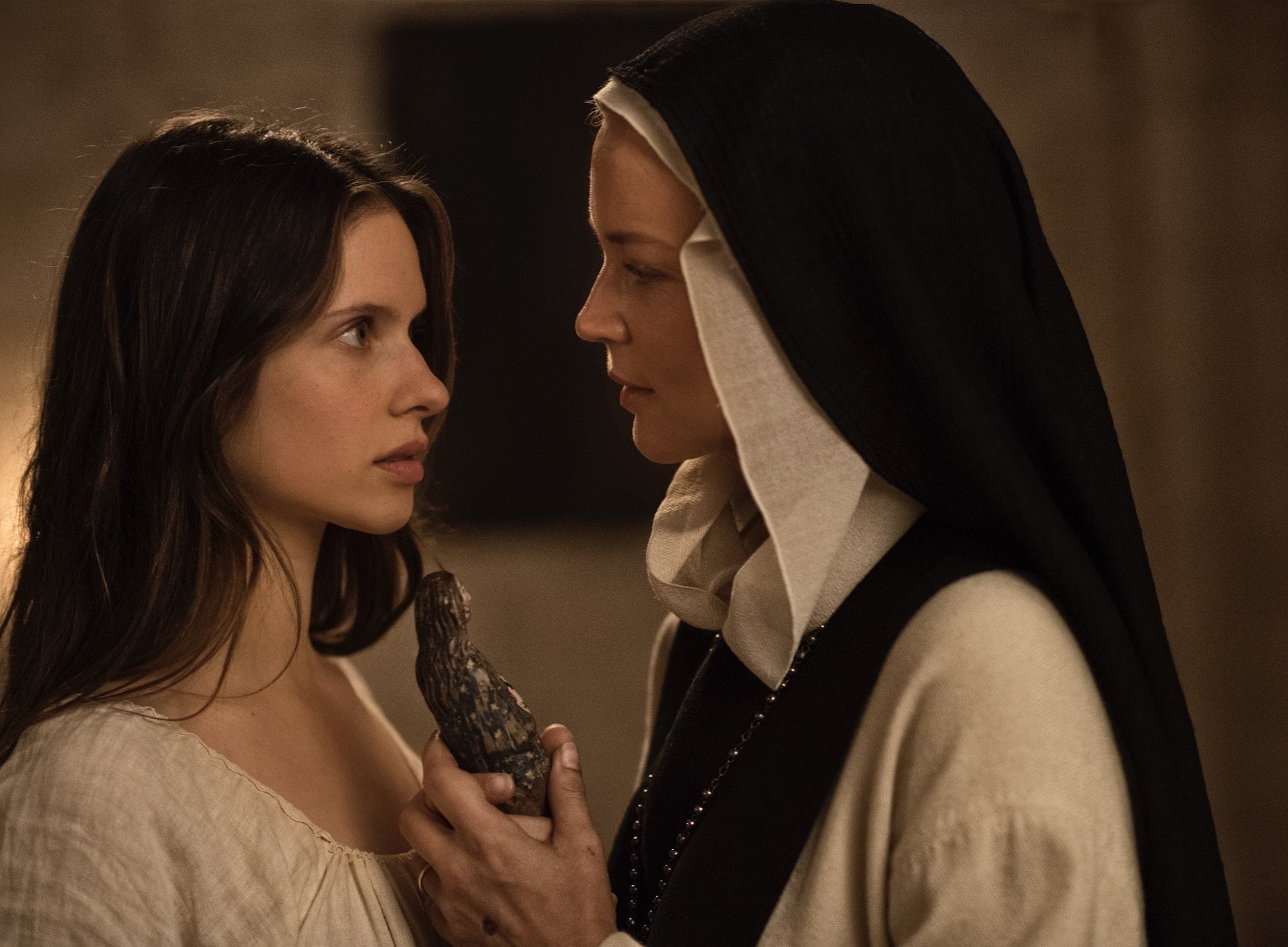
In the film, we can read the plague as a metaphor for a contagion that spreads rapidly and makes no distinction between the clergy and the commoners. It is the clergy who bring the plague into the walled town of Pescia. The plague, then, also becomes synonymous with the metaphor for religious corruption that spreads along with the ranks from the Nuncio to the sisters in the monastery to the common people of Italy. If we are bold enough, we may also read about the counter-reformation, or catholic revival, taking place in Italy during this period in history as the plague.
Plague also features the symptoms of delirium and fever, resulting in a kind of slow deterioration of the human body, eventually pushing them into the abyss of death. We can read Benedetta’s rise to power in the ranks within the monastery as a result of scientifically delirious symptoms. The thirst for the power she comes to possess becomes the plague she gets afflicted with, forcing her to subject her body continuously to physical pain and torture only to lead a life of (supposed) humiliation till her death as a septuagenarian.
Body as the Site of Sin and Faith: A Dichotomy
Verhoeven’s attention to the body as the site of horror, thrills, and pleasure is not new for us. In his treatment of the female body, he appears obsessed with its appearance. In Flesh + Blood (1985), Verhoeven’s first English language work, he fills it with nudity and gory, blood-spilling violence. Another of his more famous works, Basic Instinct (1992), presents the body as the site of control and discomfort. The body is an erotic tool, but it is also how the human being chooses to use this body that helps to mark the morality quotient in these films. Benedetta follows a similar kind of exploration of the human body.
Benedetta’s body becomes a site of pleasure, therefore sin, as she indulges in sexually stimulating activities with Bartolomea. The stigmata that she receives or willingly enforces upon herself, the speaking in an angry male voice, and her death and resurrection are all performative acts that transform her body, on the other hand, into a site of faith for the common people. While living in the convent, she would have to prioritize her body as the site of faith over its desires for bodily pleasure.
A quarter into the film, we start seeing Benedetta’s sexual desires directly challenging the life of a chaste nun she has trained herself to be. Yet, soon enough, Bartalomea appropriately assumes that Benedetta is using her as an object of desire to satisfy herself. At only one moment in the film do these two sites become one in Benedetta. It is a moment of seductive confession to Bartolomea where she states that God expresses his will through her body. However, these sites are otherwise in direct conflict with each other inside Benedetta. Therefore, she is far from being a likable character or a scheming mega mind in the story.
In most places, she appears to be simply confused about choosing between the two, sometimes not even clear to the audience why she picks the one she does. It is for her sexual desires as a nun that she is subjected to a public trial. However, because of her capacity to display the body as the site of faith in public, she momentarily escapes punishment and, perhaps, death by burning at the stakes. This dichotomy is very real and is a defining feature of Sister Benedetta, the most prominent character trait of all. It is also how Benedetta yields this dichotomy to her own gains that she becomes a Machiavellian character in this story. To that extent, she chooses her body as a site of faith, which generates fear among the masses, over her body as a site of pleasure and love.
Benedetta Movie Ending Explained:
On the day Sister Benedetta is to be executed, she wishes to meet Sister Felicita, who is afflicted with the plague and housed in a separate chamber, and ask for her forgiveness. Once there, Benedetta tells her that her daughter, Christina, is in heaven. Sister Felicita further asks what she sees in her future, and Benedetta whispers the reply in her ear.
Later that day, Nuncio’s men carry Benedetta in a cart through a raging crowd into the center of the town. Bartolomea struggles through this crowd toward Benedetta and seeks her forgiveness. But Benedetta only smiles, replying that she had to be betrayed. The Nuncio allows Benedetta an opportunity to escape her executive if she confessed to her crime in front of the town of Pescia. She steps forward but soon reveals new stigmata on her palms, speaking in an angry male voice about the descent of the angel of death, or the plague, into their midst. At this moment, Sister Felicita emerges into the crowd and reveals her body, now infected and full of weeping sores from the plague.
Panic breaks out among the crowd; Nuncio orders his men to take away Benedetta for burning. However, through a dramatic turn of events, the crowd breaks free in a rage against the Nuncio, and the stake at which Benedetta was hoisted for execution catches fire. Thankfully, while the mob is chasing the Nuncio, Bartolomea manages to free Benedetta. She also spots a piece of broken pottery near her foot, understanding that Benedetta had inflicted the stigmata upon herself to agitate the crowd against the Nuncio and save her.
Meanwhile, the Nuncio is roughed up by the crowd, unclothed to reveal his plague sores, and stabbed by an enraged woman. Benedetta approaches him in his dying moments. He asks her if he were destined to go to heaven or hell. She tells him that he would go to heaven, and he accuses her of lying till the end. The Nuncio has understood that Benedetta was a scheming mind and all her godly encounters were nothing but a figment of her imagination that she was freely using to manipulate the crowd. Bartolomea and Benedetta are about to flee the town when they spot Sister Felicita walking into the burning stake. She dies in the town center, and we assume that this death stops the spread of the plague in the town of Pescia.
In the next scene, we find Bartolomea and Benedetta lying in each other’s arms. They appear to be in an abandoned cave or stable where they have sheltered far away from the town. Benedetta observes thick black smoke rising from the town and begins to dress up. She says that she needs to go back to her home, the convent, and tells Bartolomea off when she says that her life in the convent was a thing of the past. Bartolomea proposes to go somewhere new together, but Benedetta asks if they are going to survive by stealing food or selling their bodies in such a life.
Benedetta is convinced that the people of the town won’t execute her anymore. An angry Bartolomea confronts her about the truth of her stigmata, asking her to stop with the hypocrisy. But Benedetta seems convinced that even if she were to be burnt, God wouldn’t let the flames touch her. She says that a miracle of that nature would be her gift to her unbelieving lover. She kisses Bartolomea and tells her, almost with an air of tragic resignation, that she was a naïve girl and that was part of her magic. It can be considered to be her only vocal acceptance of her love for Bartolomea. After this, she walks away to the town leaving an angry Bartolomea hurling expletives at her.
In the end, a title card appears telling us that Benedetta lived till 70 in that town. She was sometimes allowed to attend mass and eat with the other sisters in the convent. The plague, which ravaged the countryside, had spared Pescia. The film doesn’t clearly tell us whether or not Benedetta’s stigmata was supernatural or self-inflicted for rising the ranks among the sisters in the convent. The confusion is part of its charm and its criticism.


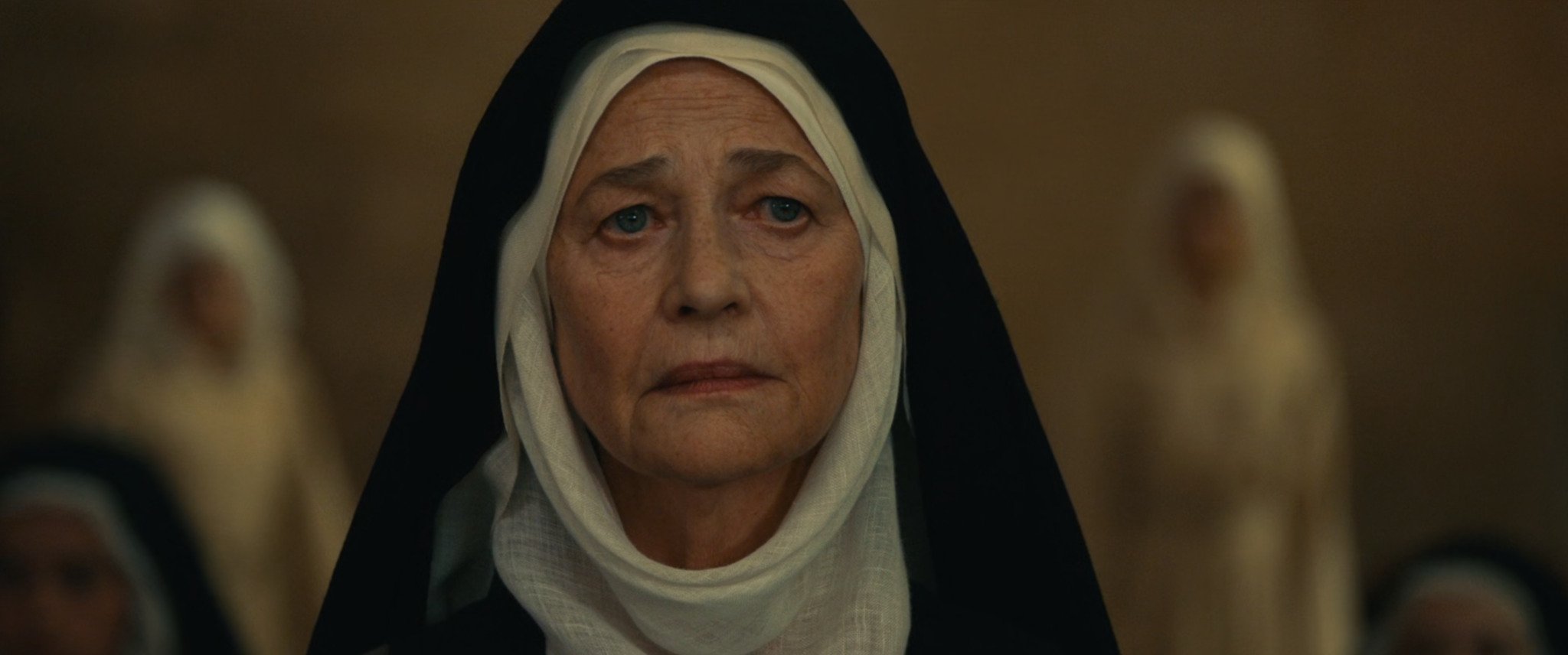
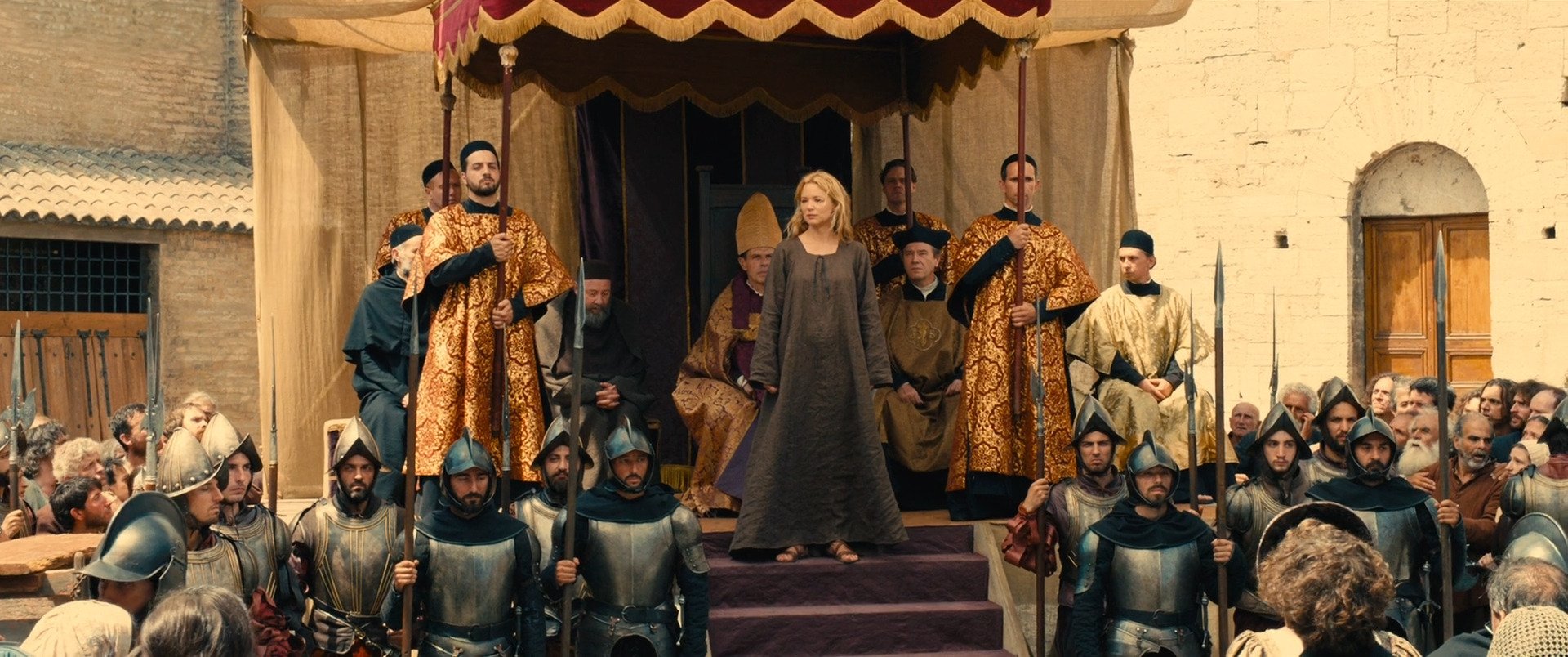
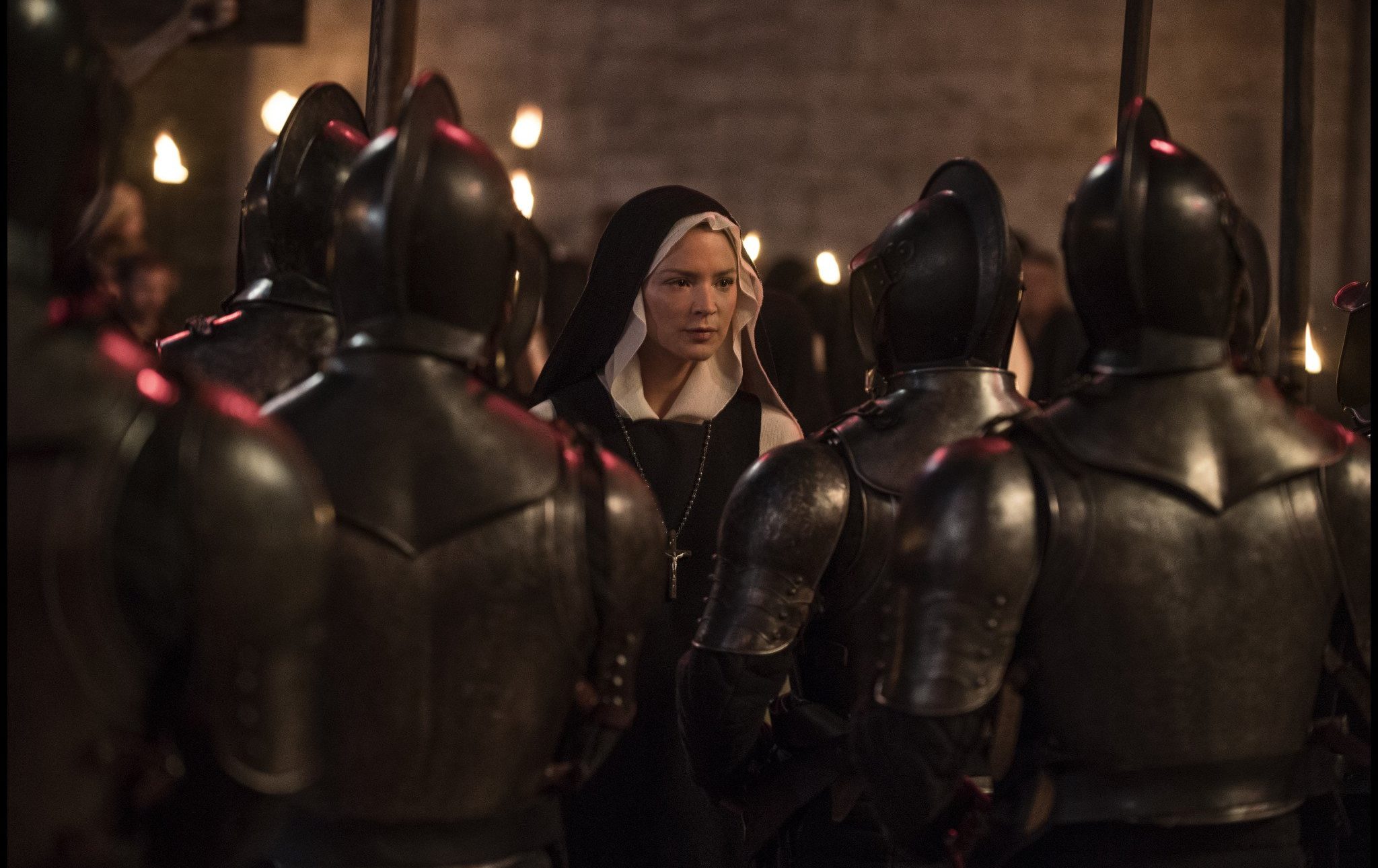



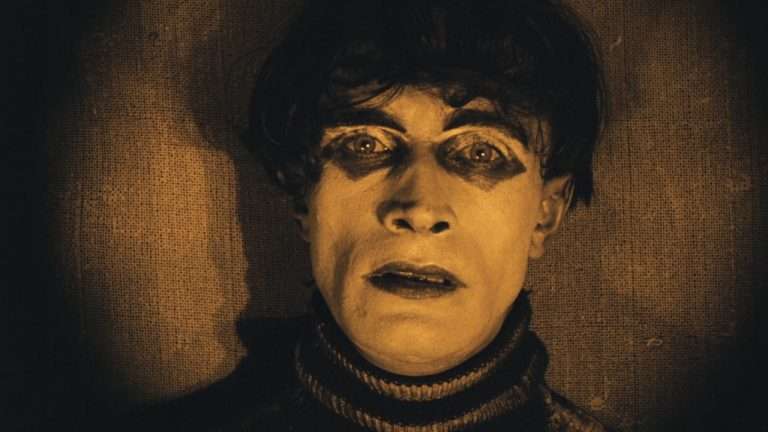
![Nayattu [2021] Netflix Review: A Taut Thriller of Contradictory Politics](https://79468c92.delivery.rocketcdn.me/wp-content/uploads/2021/05/Nayattu-768x576.jpg)

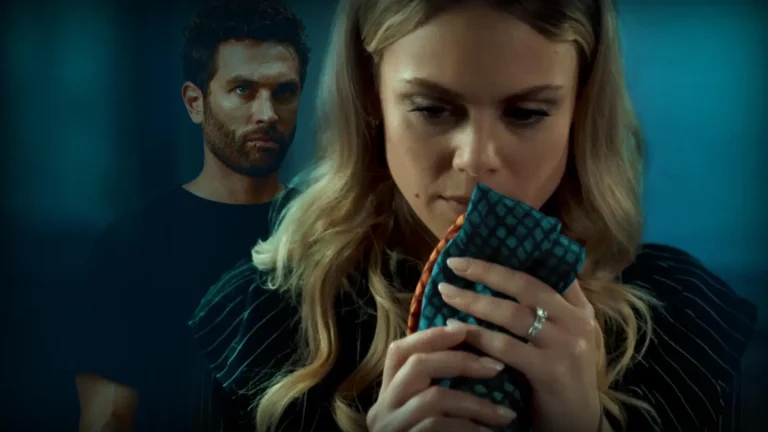
![Here and There [2021]: ‘NYAFF’ Review – Rom-Com in the Time of COVID-19](https://79468c92.delivery.rocketcdn.me/wp-content/uploads/2021/08/Here-and-There-5-NYAFF-768x488.jpg)